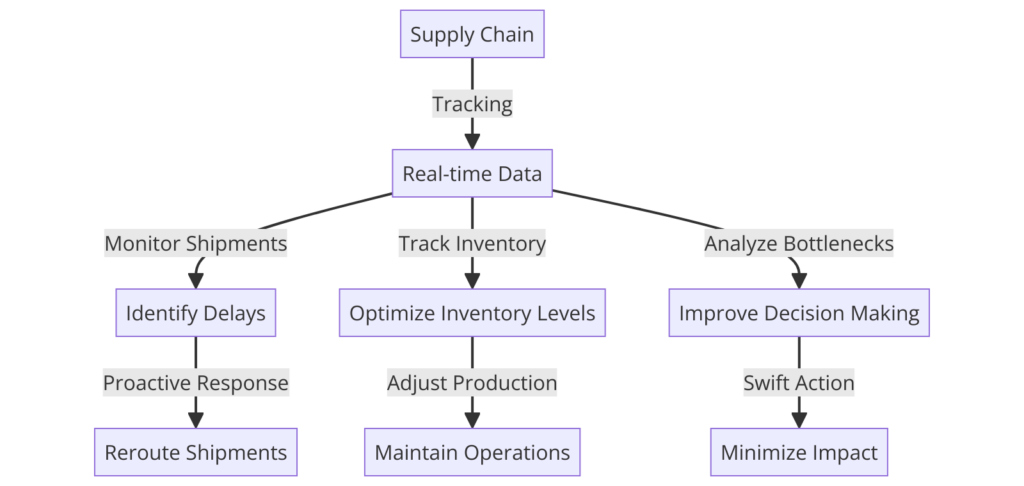Supply chain disruptions can have significant impacts on businesses, affecting everything from inventory levels to customer satisfaction. These disruptions can be caused by a variety of factors including natural disasters, geopolitical issues, and internal organizational changes. To mitigate these disruptions, businesses must adopt proactive strategies that enhance their resilience and ensure smooth operations. This article explores seven effective strategies to mitigate supply chain disruptions, helping businesses maintain continuity and efficiency in their operations. By understanding and implementing these strategies, companies can build more robust and resilient supply chains capable of withstanding unexpected challenges and maintaining business continuity.
1. Diversify Suppliers
Relying on a single supplier for critical components or materials can be risky, as any disruption affecting that supplier can halt production. Diversifying your supplier base reduces dependency on any one supplier and minimizes the risk of disruptions. By sourcing materials from multiple suppliers in different geographic locations, businesses can mitigate risks related to geopolitical issues, natural disasters, and other regional disruptions. This strategy ensures that if one supplier faces an issue, alternative sources can fulfill the demand without significant delays. However, it is essential to balance the costs and complexities of managing multiple suppliers with the benefits of reduced risk. Developing strong relationships with multiple suppliers also encourages competitive pricing and innovation, enhancing overall supply chain resilience.
2. Increase Inventory Buffers
Maintaining higher inventory levels can act as a buffer against supply chain disruptions. While just-in-time (JIT) inventory systems reduce holding costs, they can leave businesses vulnerable to supply chain shocks. By keeping a safety stock of critical materials and finished goods, companies can continue operations smoothly even if there are temporary disruptions in the supply chain. This approach requires careful planning to avoid excessive carrying costs while ensuring that buffer stocks are sufficient to cover potential shortages. Advanced inventory management systems can help optimize inventory levels and balance the costs and benefits effectively. Increasing inventory buffers provides a cushion during unexpected disruptions, allowing businesses to maintain production and meet customer demands.
3. Implement Advanced Planning and Forecasting Tools
Accurate demand forecasting and planning are crucial for mitigating supply chain disruptions. Advanced planning tools that use AI and machine learning can analyze historical data, market trends, and external factors to predict demand more accurately. These tools help businesses adjust their procurement and production schedules in response to anticipated changes in demand, reducing the risk of stockouts or overproduction. Implementing such technologies enables businesses to be more agile and responsive, adapting quickly to disruptions and maintaining continuity in their supply chain operations. Additionally, these tools can help identify potential supply chain risks early, allowing businesses to take proactive measures to mitigate their impact.
4. Enhance Supply Chain Visibility

Visibility across the entire supply chain allows businesses to identify potential disruptions early and take proactive measures. Implementing digital tools such as supply chain control towers and real-time tracking systems provides a comprehensive view of the supply chain, from raw materials to finished goods. These tools enable businesses to monitor shipments, track inventory levels, and identify bottlenecks or delays. Enhanced visibility facilitates better decision-making and allows companies to respond swiftly to disruptions, minimizing their impact on operations. For example, real-time data can alert managers to delays at ports or production slowdowns, enabling them to reroute shipments or adjust production schedules accordingly.
5. Develop Strong Relationships with Suppliers
Building strong, collaborative relationships with suppliers is essential for supply chain resilience. Open communication and trust between businesses and their suppliers enable better coordination and quicker response to disruptions. Establishing long-term partnerships and regularly reviewing supplier performance can help ensure that suppliers are reliable and capable of meeting demands even during challenging times. Additionally, businesses can work with suppliers to develop contingency plans and share best practices for managing disruptions, further strengthening the supply chain. Collaborative relationships also facilitate joint problem-solving and innovation, helping both parties improve their operations and adapt to changing market conditions.
6. Invest in Workforce Training and Retention
Labor shortages and strikes can cause significant supply chain disruptions. Investing in workforce training and improving working conditions can help retain skilled employees and reduce turnover. Offering competitive wages, benefits, and opportunities for career advancement can attract and retain talent. Additionally, cross-training employees ensures that there are always skilled workers available to handle critical tasks, even if some employees are unavailable. By fostering a motivated and capable workforce, businesses can enhance their operational resilience and maintain productivity during disruptions. Regular training programs also ensure that employees are equipped with the skills needed to adapt to new technologies and processes, further strengthening the supply chain.
7. Create a Risk Management Plan
A comprehensive risk management plan is essential for mitigating supply chain disruptions. This plan should identify potential risks, assess their impact, and outline strategies to address them. Using frameworks like PPRR (Prevention, Preparedness, Response, Recovery) helps businesses prepare for and respond to disruptions effectively. Regularly reviewing and updating the risk management plan ensures that it remains relevant and effective in addressing new and emerging risks. Additionally, conducting scenario planning exercises can help businesses anticipate and prepare for various disruption scenarios, enhancing their overall resilience. A well-developed risk management plan enables businesses to respond swiftly and effectively to disruptions, minimizing their impact on operations.
In Conclusion
Mitigating supply chain disruptions requires a proactive and comprehensive approach that includes diversifying suppliers, increasing inventory buffers, implementing advanced planning tools, enhancing visibility, developing strong supplier relationships, investing in workforce training, and creating a robust risk management plan. By adopting these strategies, businesses can enhance their supply chain resilience, ensuring continuity and efficiency in their operations even in the face of disruptions. As supply chain challenges continue to evolve, staying agile and prepared will be crucial for maintaining competitive advantage and operational stability. Implementing these strategies not only helps businesses navigate current disruptions but also prepares them for future challenges, ensuring long-term success in a dynamic market environment.

